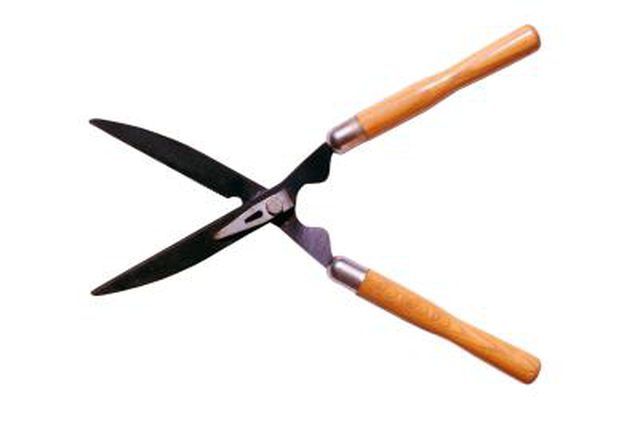Bulbs
Flower Basics
Flower Beds & Specialty Gardens
Flower Garden
Garden Furniture
Garden Gnomes
Garden Seeds
Garden Sheds
Garden Statues
Garden Tools & Supplies
Gardening Basics
Green & Organic
Groundcovers & Vines
Growing Annuals
Growing Basil
Growing Beans
Growing Berries
Growing Blueberries
Growing Cactus
Growing Corn
Growing Cotton
Growing Edibles
Growing Flowers
Growing Garlic
Growing Grapes
Growing Grass
Growing Herbs
Growing Jasmine
Growing Mint
Growing Mushrooms
Orchids
Growing Peanuts
Growing Perennials
Growing Plants
Growing Rosemary
Growing Roses
Growing Strawberries
Growing Sunflowers
Growing Thyme
Growing Tomatoes
Growing Tulips
Growing Vegetables
Herb Basics
Herb Garden
Indoor Growing
Landscaping Basics
Landscaping Patios
Landscaping Plants
Landscaping Shrubs
Landscaping Trees
Landscaping Walks & Pathways
Lawn Basics
Lawn Maintenance
Lawn Mowers
Lawn Ornaments
Lawn Planting
Lawn Tools
Outdoor Growing
Overall Landscape Planning
Pests, Weeds & Problems
Plant Basics
Rock Garden
Rose Garden
Shrubs
Soil
Specialty Gardens
Trees
Vegetable Garden
Yard Maintenance
How to Care for Scaevola and Bacopa Plants
How to Care for Scaevola and Bacopa Plants. Bacopa and scaevola plants are sun-loving, prolific bloomers with sprawling/trailing habits and evergreen foliage. Bacopa's tiny, five-petal flowers and scaevola's fan-shaped flowers range in colors from blue and violet/lavender to white and pink. Low-growing, between 3 and 12 inches tall, both plants...

Bacopa and scaevola plants are sun-loving, prolific bloomers with sprawling/trailing habits and evergreen foliage. Bacopa's tiny, five-petal flowers and scaevola's fan-shaped flowers range in colors from blue and violet/lavender to white and pink. Low-growing, between 3 and 12 inches tall, both plants work well in garden beds and borders, as ground covers, or in containers. Their care requirements are similar, so with some adjustments, they can be grown in the same bed or border.
Things You'll Need
Bacopa plant(s)
Scaevola plant(s)
Yardstick
Compost
Peat moss
Spade
Mulch
Water
High-potash liquid fertilizer
High-nitrogen fertilizer
Garden shears
Select a sunny to partially shady (receiving at least 6 hours of sun a day) location for planting bacopa. Scaevola prefers full sun but tolerates partial shade, though with somewhat less fullsome flowering. Using a yardstick to measure, allot each plant at least 2 feet of space.
Bacopa is of South African origin; scaevola traces to Australia and Polynesia. Both are classified as tropicals and tender perennials, though grown as annuals in temperate and cooler climates. Their USDA hardiness zones are 10 and 11; in other zones, they thrive in the higher temperatures of late spring through summer, blooming until early fall.
Amend soil with peat moss and compost, working them in to a depth of about 1 foot with a spade. Both help soil to to drain well--a requirement of both bacopa and scaevola. At the same time, peat moss provides the acidity both plants prefer, and compost provides balanced nutrients.
Apply a layer of organic mulch, such as hemlock, cedar or pine chips, to help soil retain moisture and prevent weed growth. The mulch will also add nutrients to the soil as it breaks down over time.
Water bacopa regularly, about every other day, depending on heat, light and humidity conditions. Keep the soil evenly moist, never allowing it to dry out, which can cause the flower buds to dry up.
Water scaevola more sparingly--once, established, it is considered "drought-resistant". However, during hotter, dryer summer days, water the plants roughly twice a week.
For both bacopa and scaevola, avoid over-watering, which can cause root rot and plant death.
Wait for flowering to drop off at the end of the season; feed bacopa with a high-potash liquid fertilizer to reinvigorate. For the rest of the season, compost will suffice.
Throughout the season, feed scaevola regularly with a high-nitrogen fertilizer.
Prune plants by snipping off older stems with garden shears as they get straggly. Dead-heading (removing faded blooms) is not necessary.
Tips & Warnings
Bacopa is the common name of the genus "Sutera." The plant classified under the genus "Bacopa," commonly called "water hyssop," is an aquatic plant used in water gardens, ponds and aquariums.
You'll sometimes see scaevola referred to as "fan flower" because of the shape of its flowers.
Bacopa and scaevola are especially attractive in hanging baskets and window boxes, which showcase their cascading flowers.
Bacopa and scaevola are not frost-tolerant.